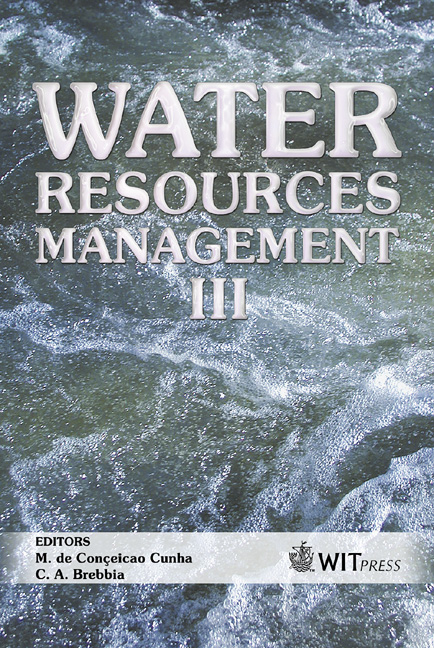Spatial Distribution Of Nutrients And Major Ions In The Runoff Waters Of An Agricultural Microcatchment, NW Spain
Price
Free (open access)
Transaction
Volume
80
Pages
10
Published
2005
Size
430 kb
Paper DOI
10.2495/WRM050531
Copyright
WIT Press
Author(s)
M. T. Taboada-Castro, A. Diéguez-Villar & M. M. Taboada-Castro
Abstract
In this paper the spatial variation of the concentrations of nutrients (NO3, NH4 + and PO4 3--P) and major ions (Ca2+, Mg2+, Na+, K+, Cl, and SO4 2) in runoff waters of a small agricultural microcatchment that received large amounts of slurry is shown. The spatial distribution of the electrical conductivity is also examined. Finally, factors regulating losses of nutrients and other constituents from agricultural lands to receiving waters are discussed. The concentrations of ammonium and nitrate follow opposite spatial distribution patterns. As the distance to the uppermost part of the catchment increases, where the highest amounts of slurry are found, the concentration of ammonium declines while that of nitrates rises. The concentrations of phosphates, calcium, magnesium, potassium, chlorides, sulfates and also the electrical conductivity values follow distribution patterns that are similar to those of ammonium, whose origin is related to both the dilution effect of the slurry contaminating load and to factors related with the configuration of the catchment. Keywords: nutrients, major ions, runoff waters, agriculture microcatchment. 1 Introduction In recent decades, different agricultural activities have become a large source of non-point contamination of continental waters [1]. The origin of this contamination is suboptimal use of chemical fertilizers, organic manures (manure and slurry), pesticides, and other agricultural chemical products. In addition, large amounts of sediments from erosion of agricultural soil have discharged into streams [2-3]. In addition, any attached nutrients or pollutants
Keywords
nutrients, major ions, runoff waters, agriculture microcatchment.





